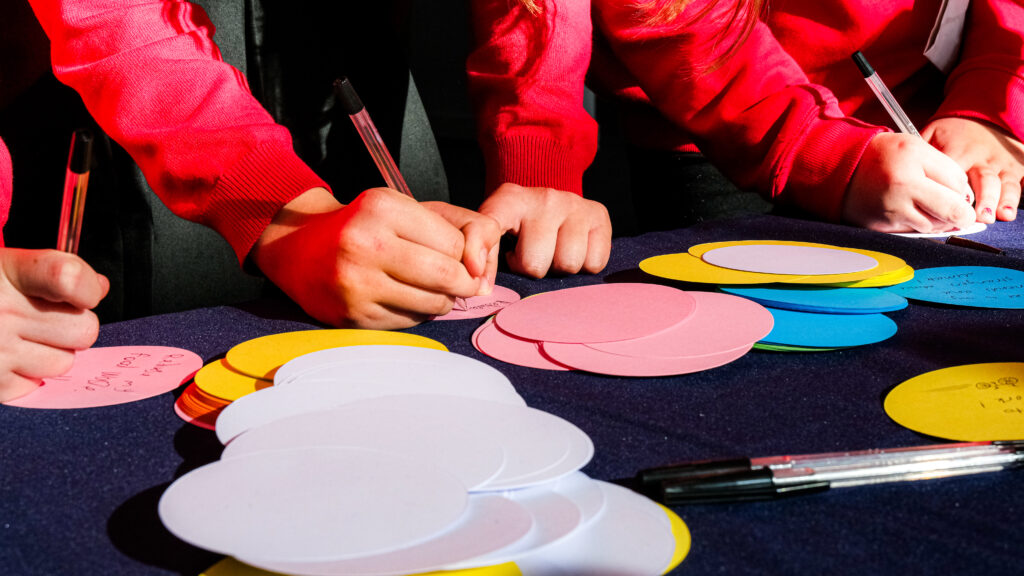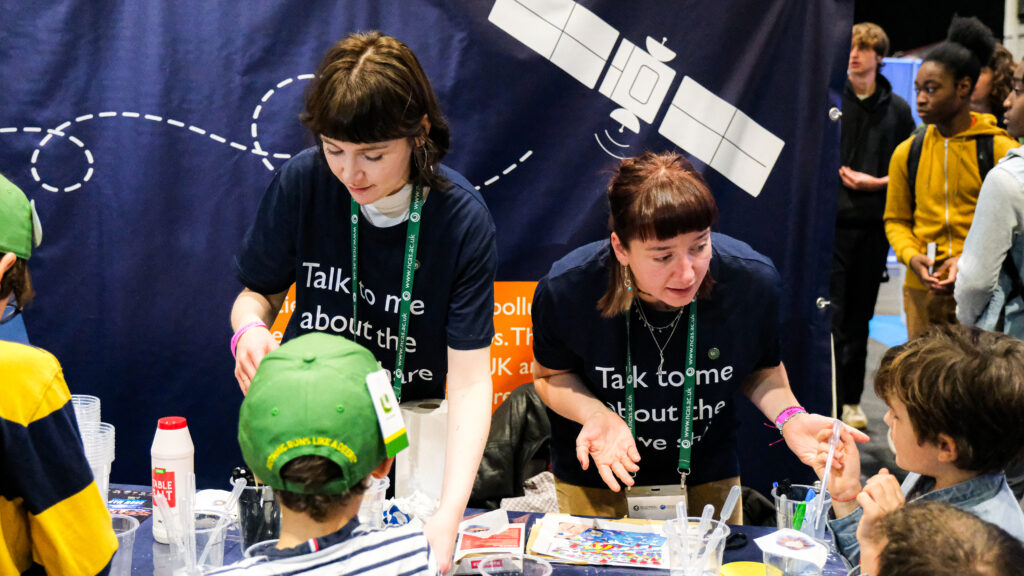
Creative ways to communicate science: Why we talk about climate change and air pollution
At the National Centre for Atmospheric Science, we care about fostering productive and inspiring conversations about the ever-changing climate, weather, and air around us. By engaging with the public, we make climate science more accessible, and spark interest within future climate scientists.
In October 2024, we participated in two public engagement events – New Scientist Live in London, and Explore Our Planet (Archwiliwch Ein Planed) in Cardiff. We spoke to NCAS researchers who reflected on their experience participating in the events.
Matt Baker, chemistry technician and placement student at the FAAM Airborne Laboratory, shared how impactful it was to meet people who are interested in his work:
“I had a conversation with a mature student who was studying environmental science at the University of Bath and working on one of the other stands at New Scientist Live. He wanted to get involved with NCAS and NCEO directly and really cared about environmental issues. It was great to see that like-minded people are out there and have a drive for making the world a better place.”
Eliza Karlowska, research scientist at the National Centre for Atmospheric Science and the University of Reading, emphasised the importance of talking about science with young people:
“I was surprised how much young kids already know about climate change and what they can do to be more environmentally friendly. They are at this wonderful age when they’re curious about the world, and this curiosity should be cultivated to develop new scientists.”
At New Scientist Live, we performed chromatography experiments, which served as a visual representation of everything that makes up our air – making the invisible visible. It is not easy to talk about something we cannot see, but the colourful chromatography circles led us to discussions about air quality around different cities in the UK and beyond. We used air quality chromatograms and the recently developed Air Quality Stripes tool as visual aids to support these conversations.
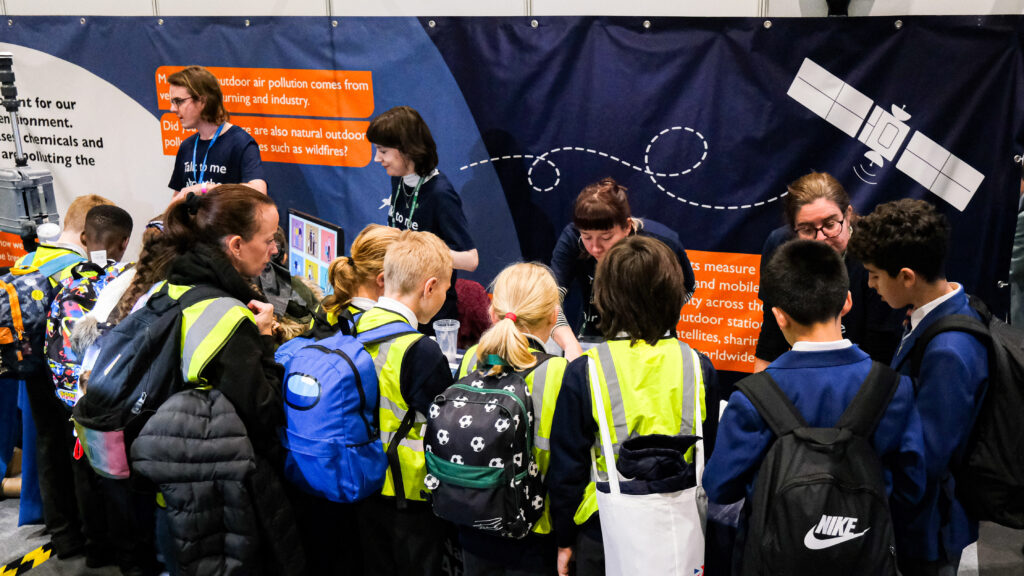
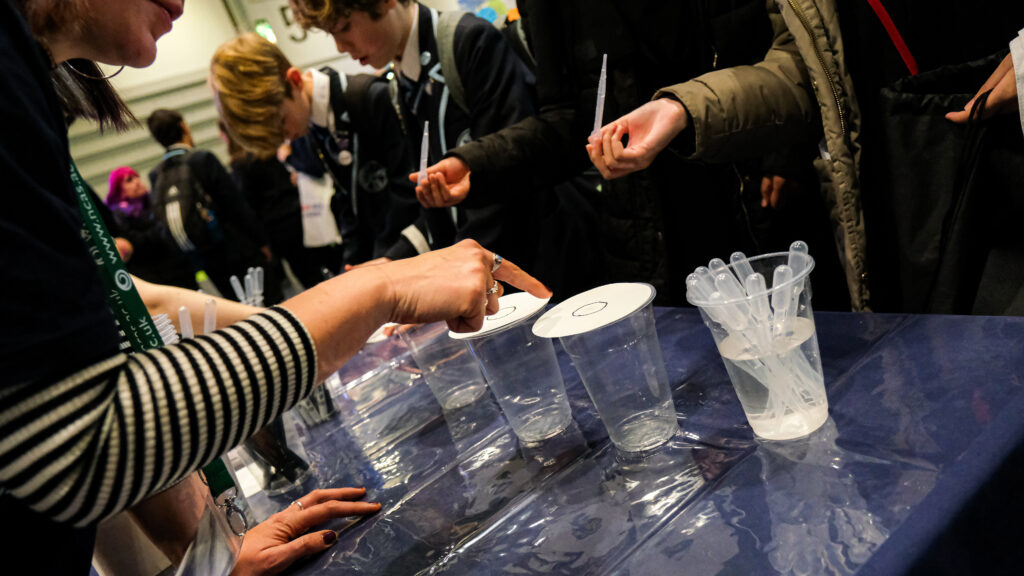
At Explore Our Planet, pupils from 40 schools made mosaics of the Climate Stripes with help from NCAS scientists. The mosaics showed the 100 year timeline of temperature change in Cardiff. This visually striking and hands-on activity served as a great conversation starter. Participants compared the colour representing the temperature of their birth year with the people next to them, and shared their predictions for the colour of 2024 – which is anticipated to be the warmest year on record.
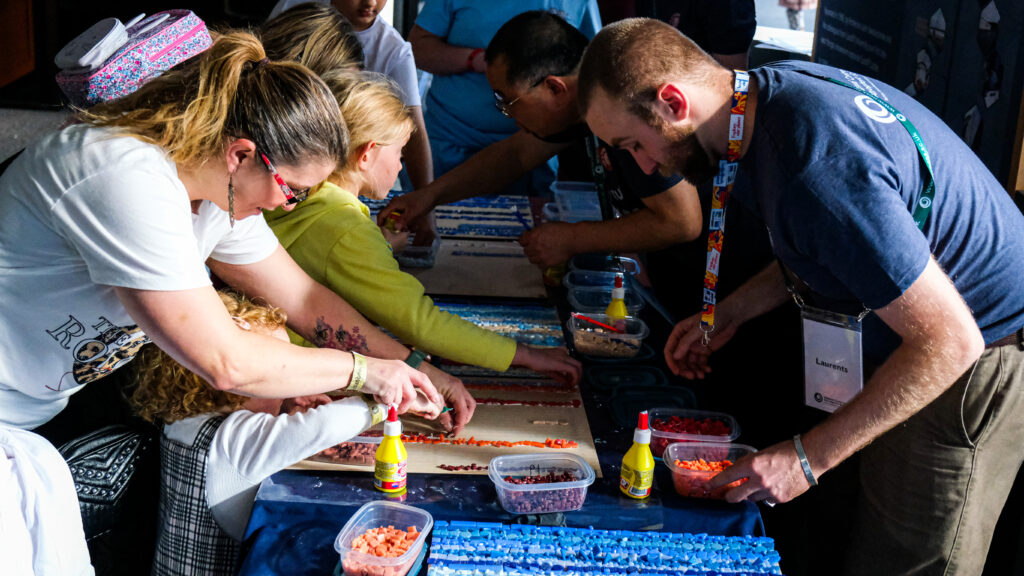

Taking creative approaches is an effective way to explain complex environmental issues such as air pollution and climate change, and to spark curiosity.
“A young kid asked me how we measured temperature in the past before we had thermometers. I love questions like that because scientists ask themselves such questions every day: how can we measure the Earth’s past to learn about its present. Such curiosity developed at a young age is what makes a potential future scientist,” Eliza reflected.
It was impactful to see the different perspectives people of all ages brought to our stands and the conversations that unfolded.
I think it is important to engage with young people about science, in particular young girls because they are not necessarily encouraged to take science at school. I did not have many female scientist role models growing up, and I want to be that role model for other young girls.
Eliza Karlowska, research scientist at the National Centre for Atmospheric Science and the University of Reading
I had a great conversation with an older gentleman who wanted to make change in his community where there had been an influx in his neighbours using open fireplaces. He was really interested in what we had to say and seemed to take a lot away from the stand.
Matt Baker, chemistry technician and placement student at the FAAM Airborne Laboratory
It was clear that beyond initial excitement and curiosity there was also concern for the future of our planet. Climate change, air pollution and extreme weather impact communities worldwide. Research shows that young people increasingly suffer from anxiety and other heavy emotions relating to the planet and their future, because it feels like most of the actions needed for impactful change are out of their hands.
One thing we can all do to help encourage a feeling of active hope is focus on small individual actions in our daily lives – no matter what age you are. This is why we encouraged visitors at both stands to write pledges about what small actions can be done for our planet.
By having conversations about the personal and collective impact of our actions, and by acknowledging each other’s concerns, we can inspire an environmentally-conscious generation who are engaged with science, voicing their worries and sharing their ideas for a more sustainable future.
